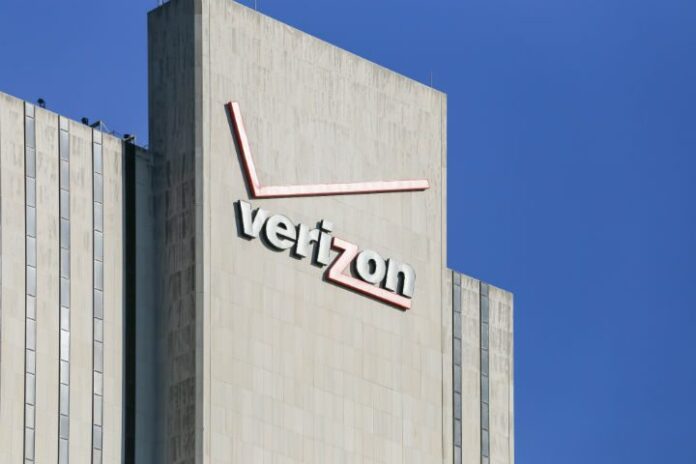Verizon CFO said carrier will not wade into unlimited data fray as it continues to balance spectrum and infrastructure
Verizon Communications may have a lot on its plate in terms of expanding its Verizon Wireless operations, but CFO Fran Shammo appeared calm at a recent investor conference in explaining the telecom giant’s motives and plans.
Speaking at this week’s Morgan Stanley Technology, Media and Telecom Conference, Shammo tackled the myriad of initiatives currently ongoing at the company, including continued competitive pressures around “unlimited” data services, the carrier’s Go90 video platform and its plans for “5G” technology.
In terms of competitive pressure, Shammo said Verizon Wireless did not see the need to dip back into the unlimited data pool its rivals have recently begun to promote, stating the moves were most likely temporary adjustments made in order to stimulate growth.
“There is some unlimited running here and there, but nothing that’s a permanent change and nothing that we see at this point would cause us to react,” Shammo said. “But from a growth trajectory I think it’s a level set that says look, smartphone growth is slowing. And if you look at some of the other growth trajectories of some of the competitors, it’s really a flip from prepaid to postpaid.”
Go90 ‘progression and evolution’
With its Go90 service, which launched late last year, Shammo said the carrier was still in the early stages of a two- to three-year process in rolling out the platform.
“There is still a lot of progression and evolution that has to happen in that platform,” Shammo said. “This was not something that was launched last year that was going to take off immediately like a new smartphone. This is going to be a progression and evolution for us over the next two to three years. But as we bring in some of the content we’re seeing some pleasing things around since we launched the NBA, since we launched music, some of the original content that we’re getting from AwesomenessTV, we’re starting to learn of what’s pleasing to the customer, what works, what doesn’t work and we’ll continue to evolve this product through 2016.”
One challenge Shammo noted was in getting consumers to pay for the service, explaining the company would look to capitalize on other ways to drive traffic and revenues. This was highlighted by Verizon’s acquisition of AOL last year, which included the Adtech platform deemed “critical” in the carrier’s launch of Go90.
“We know that wallet share is an issue going forward,” Shammo said. “So we have to get people to consume more but we know that they are not going to continue to pay for that consumption so we’ll monetize that via the advertising model.”
Spectrum vs. small cells
In terms of continued network evolution, Shammo said Verizon Wireless remains comfortable with its current spectrum position for at least the next several years as it continues to balance spending between new licenses and densification through infrastructure deployments. Shammo cited the carrier’s work around the recent Super Bowl in the San Francisco Bay Area, noting Verizon Wireless was able to handle the increased traffic load through the use of small cells instead of dipping into its portfolio of spectrum holdings.
“There was no incremental overlay of spectrum in San Francisco even though we have AWS-3 and we started to deploy some of that,” Shammo said. “But that’s not going to be deployed until next year. So we did that mostly through small cell and fiber technology. And capacity is a balance between spectrum and capacity and right now capacity is cheaper than what the spectrum was at least coming out of the AWS-3 auction. So we will continue to densify our network.”
’5G’ an add-on to LTE
Shammo also reiterated Verizon Wireless’ plans for “5G” technology, noting the carrier was currently trialling aspects at its headquarters, using a van to drive around outside its research facilities to test connectivity. Partners for Verizon Wireless’ 5G push include Alcatel-Lucent, Cisco Systems, Ericsson, Nokia Networks, Qualcomm and Samsung.
With spectrum at a premium, Verizon is looking at both the commercial market and for regulatory help in freeing up new licenses to support the technology move. Shammo noted the company is set to pick up rental access to some licenses in the 28 GHz band from its recently announced plans to acquire XO Communications that its looking to combine with spectrum in the same band granted on an experimental basis by the Federal Communications Commission covering five cities.
“This rental agreement enables us to include that in some of our [research and development] with 28 gigahertz. So that just continues the path that we’re on in launching 5G as soon as the FCC clears spectrum,” Shammo said.
Despite the hype surrounding 5G, Shammo stated the carrier’s work on the technology would be based on its current LTE network and infrastructure, with the next evolution an “add-on” to the resources already deployed and at lower costs.
“Think of this as this is not a replacement of LTE. This is an add-on,” Shammo said. “So this is not a capital intensive. … It’s going to run off of the same densification small cell technology that LTE is currently running off of. … But don’t think of this as a multibillion-dollar launch of new technology. It’s not that it all. This will ride over the current infrastructure of the LTE network. It’s not a replacement of the LTE network. It’s an add-on.”
Bored? Why not follow me on Twitter

